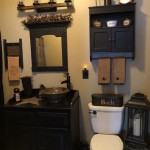Wall Decor Ideas to Maximize Space in Small Dining Rooms
Small dining rooms often present a design challenge: how to create a space that feels inviting and functional without overwhelming the limited square footage. Wall decor plays a crucial role in achieving this balance. Thoughtfully chosen and strategically placed wall decorations can visually expand the room, add personality, and enhance the overall dining experience. It's not just about filling empty wall space; it's about carefully curating elements that complement the existing design and create a cohesive and airy atmosphere.
The key to successful wall decor in a small dining room lies in understanding the principles of visual perception. Using lighter colors on walls, incorporating reflective surfaces, and employing vertical strategies can make the room appear larger and brighter. Overcrowding the walls with too many items can have the opposite effect, creating a cluttered and closed-in feeling. Instead, focus on a few well-chosen pieces that make a statement without dominating the space. Consider the existing furniture, the color scheme, and the natural light available when selecting the right wall decor options.
Effectively utilizing wall decor can transform a cramped dining area into a stylish and comfortable space for enjoying meals and gatherings. This article will explore several key strategies and specific decor ideas that can help maximize the visual appeal and functionality of a small dining room.
Mirrors: Expanding Space and Enhancing Light
Mirrors are a timeless trick for creating the illusion of more space, and they are particularly effective in small dining rooms. By reflecting light and creating a sense of depth, mirrors can visually double the size of the room. The strategic placement of a mirror is crucial to maximizing its impact. Positioning it opposite a window, for example, will amplify the natural light entering the room, making it appear brighter and more airy. Alternatively, placing a mirror on a wall adjacent to a window can also help bounce light around the space.
The size and style of the mirror should be carefully considered. A large, statement mirror can serve as a focal point and make a bold impact. However, smaller mirrors can also be effective, especially when grouped together to create a gallery wall effect. Consider the shape and framing of the mirror to complement the overall design aesthetic of the room. A sleek, frameless mirror can create a modern and minimalist look, while a mirror with an ornate frame can add a touch of elegance and sophistication. For a more contemporary and unique approach, consider using geometric-shaped mirrors.
Beyond their space-enhancing properties, mirrors can also add visual interest and personality to the dining room. Think about using mirrors with beveled edges or antique finishes to add texture and depth. Remember to consider what the mirror will be reflecting. Ideally, it should reflect something visually appealing, such as a window, a piece of art, or a decorative element.
Artwork: Adding Personality and Focal Points
Artwork is an excellent way to inject personality and create focal points in a small dining room. The choice of artwork should reflect your personal style and complement the overall design of the space. When selecting artwork for a small room, it's important to consider the size and scale of the pieces. Large, overwhelming artworks can make the room feel cramped, while small, insignificant pieces can get lost. Aim for a balance that suits the room's proportions.
A single, impactful piece of art can serve as a powerful focal point. Choose an artwork with bold colors or an interesting composition to draw the eye and create a sense of drama. Alternatively, a gallery wall of smaller artworks can be an effective way to showcase a collection of pieces and add visual interest. When creating a gallery wall, it's important to maintain a sense of cohesion. Use a consistent color palette or theme to tie the different pieces together. Experiment with different layouts and arrangements to find the most visually appealing composition.
Consider the subject matter and style of the artwork you choose. Abstract art can add a modern and sophisticated touch, while landscape paintings can evoke a sense of tranquility and calm. Food-themed art, such as still-life paintings of fruits or vegetables, can be a playful and appropriate choice for a dining room. When hanging artwork, ensure it is at eye level. This will make it more comfortable to view and prevent it from feeling out of place. Proper lighting is also essential to showcase your artwork effectively. Use spotlights or directional lighting to highlight the artwork and make it stand out.
Shelving: Functionality and Decorative Display
Shelving offers a practical and decorative solution for small dining rooms. It provides a place to store and display items, while also adding visual interest to the walls. Open shelving is particularly effective in small spaces, as it allows light to flow through and creates a sense of openness. Consider installing floating shelves, which appear to be attached directly to the wall without visible supports, for a clean and minimalist look.
The key to making shelving work in a small dining room is to keep it organized and uncluttered. Avoid overfilling the shelves with too many items, as this can make the room feel cramped and disorganized. Instead, curate a selection of carefully chosen objects that complement the overall design of the space. Consider displaying a mix of decorative items, such as vases, sculptures, and framed photos, along with functional items, such as dinnerware and cookbooks.
The material and style of the shelving should be consistent with the overall design aesthetic of the room. Wooden shelves can add warmth and character, while metal shelves can create a modern and industrial look. Glass shelves can be a good choice for small spaces, as they are transparent and allow light to pass through. When styling shelves, pay attention to the placement and arrangement of items. Use a variety of heights and shapes to create visual interest. Group items in odd numbers, as this tends to be more visually appealing. Leave some empty space on the shelves to allow the eye to rest and prevent the display from feeling cluttered. Consider adding trailing plants to shelves for a touch of nature.
In addition to floating shelves, consider built-in shelving units that can maximize storage space and create a cohesive look. These can be particularly useful for storing larger items, such as serving dishes and linens. A corner shelving unit can also be a great way to utilize otherwise unused space in a small dining room.
Beyond these core strategies, several other wall decor ideas can enhance a small dining room. Wall decals offer a temporary and affordable way to add pattern and visual interest. Choose a decal that complements the room's color scheme and style. Plate walls, featuring a collection of decorative plates, can add a touch of vintage charm. Wallpaper, especially with vertical stripes or a subtle pattern, can visually elongate the walls and make the room appear taller. Clocks are both functional and decorative, and can add a touch of character to the dining room. Choose a clock that complements the room's style and size. Plants in wall-mounted planters or hanging baskets can bring a touch of nature indoors and add a sense of freshness to the dining room.
The most effective wall decor is that which complements the existing elements within the space. Consider the color palette of the dining room. Lighter colors tend to make a space feel larger and more open, while darker colors can create a more intimate and cozy atmosphere. The style of the furniture should also influence your wall decor choices. A modern dining room will benefit from sleek and minimalist wall decor, while a traditional dining room may call for more ornate and decorative pieces. The amount of natural light in the room is another important factor to consider. If the room is naturally dark, choose light-colored wall decor and incorporate reflective surfaces to brighten the space.
Ultimately, the best wall decor for a small dining room is that which reflects your personal style and creates a space that you enjoy spending time in. Experiment with different ideas and find what works best for you. Don't be afraid to mix and match different styles and textures to create a unique and personalized look. Remember to prioritize functionality and avoid overcrowding the walls with too many items. With careful planning and thoughtful execution, you can transform a small dining room into a stylish and inviting space.

20 Ways To Dress Up Dining Room Walls Wall Decor
:strip_icc()/127107347_378909933559802_5209338986625741338_n-d8e04eccf7274b2b91e5b75ec9ca40ef.jpg?strip=all)
29 Dining Room Wall Décor Ideas

60 Modern Dining Room Wall Decor Ideas Designs For 2025 Paint Colors

12 Stunning Modern Dining Room Wall Decor Ideas Design Cafe

Dining Room Wall Ideas That Will Make A Big Statement Decoist

59 Dining Room Wall Decor Ideas Strikingly Beautiful Decors

54 Simple Dining Room Wall Decor Ideas Displate Blog
:max_bytes(150000):strip_icc()/art4-445991107c1841ccb4f3a266e6793183.jpg?strip=all)
46 Dining Room Wall Art Ideas For Elevated Entertaining

Thrifty And Chic Diy Projects Home Decor

Dining Room Wall Decor Ideas For Your Home Design Cafe
Related Posts







